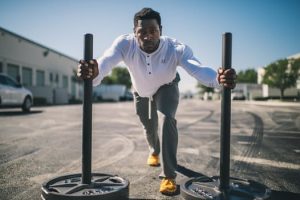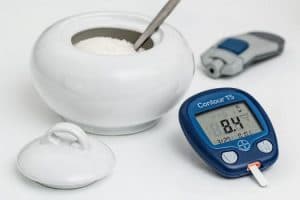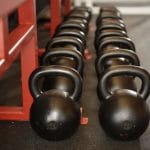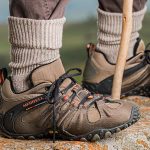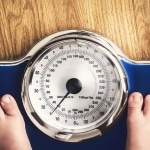I want to discuss fitness training guidance.
Long has it been that “use it or lose it” and “no pain, no gain” have anchored exercise theology. They have been the mainstay for much of modern fitness training lore. Today we still say ‘use it or lose it’ but we now say ‘no strain, no gain’.
This apparently softens the blow.

But there are all kinds of public health messages regarding exercise that recommend how much (Frequency), how long (Duration), and how hard (Intensity) you need to do an exercise to achieve or maintain health and fitness.
After the initial FDI of exercise guidance manifested for the first 30+ years of American College of Sports Medicine (ACSM) and the federal Center for Disease Control (CDC) prescriptions, there was enough data to support three more pieces of the puzzle: Type, Volume, and, for lack of better description, Mobility.
Type refers to the basic characteristics of activity – aerobic or cardio and anaerobic or strength (or resistance) training.
Aerobics, stemming from the ground-breaking work by Dr. Kenneth Cooper in the late 1960’s, refers to activities that get the heart pumping at a level of intensity that allows for the ready transport of oxygen to large muscle groups such that it can be sustained for several minutes or even hours. Think walking, running, cycling, swimming, etc.
Anaerobic work constitutes that level of intensity that forces muscles to sustain activity without ready access to oxygen such that they fatigue in short order. Typically associated with strength or resistance training, it could also apply to intense bursts of aerobic-type exercises such as running sprints. Currently in vogue are what’s called intervals, short, intense bouts of any large muscle group actions that are separated by brief recovery phases, to be repeated several times.
Volume refers to a combination of F, D, and I over a designated period of time. That is, how many days for how long and at what intensity per week should one participate in any one aspect of fitness. The measure of volume is dependent on the goals one has. So, if you’re doing strength training, volume can be assessed over a single session, or even over a day’s time if you’re doing two-a-days. For injury prevention, however, volume needs to be considered over a week’s or month’s time frame. Too much can cause overtraining or injury…or boredom, as any distance runner can attest.
Mobility, which includes flexibility as well as exercises, loaded or not, that make joints move through as much of their functional and/or optimal pain-free ranges as possible, has entered the lexicon as well. Here lies the basis for such fitness programs as functional training, Pilates, yoga and their off-shoots.
So, now we have a 6-letter exercise prescription that folks need to consider when designing their wellness regimen: FDITVM. Only an Eastern European, or maybe a Welshman, can work out a word or acronym for that.
The one area I wish to address here is intensity. For each of the other 5 letters, there’s a range of guidance for how hard one has to exert oneself in order to see results. There are many variables that must be considered here: age, gender, current cardiovascular, metabolic, and musculoskeletal health are some of them.
Traditional guidance usually refers to some percentage of your maximal aerobic capacity or your maximal strength of a specific movement, or your current maximal range of motion (ROM) of a particular joint structure or structures. But, unless you’ve actually measured them, this is an unreasonable solution to the intensity guidance.
An alternative that cropped up in the exercise science world is ‘perceived exertion’, a totally subjective measure that closely correlates with some relative percentage of one’s max…when it comes to cardio work, initially. This model has been applied more recently to strength work as well.
The way this works is thus:
Let’s say you have a maximal aerobic capacity of X. The guidelines recommend you perform aerobic exercise at 40% (for unfit, diseased, or elderly people) to 85% (for fit, healthy, younger people) of your max: 0.4 X up to 0.85X. Simple enough?
Since you probably have not actually measured X, you could simply do your preferred cardio workout to a subjective intensity that you would deem 40% or 50% or 80% of your ability. You might be off by several digits but you could readily say “I jogged at 70% of my ability” and would be close enough for government work, as they say.
Likewise, rather than test your maximal strength capacity for, let’s say, a squat, which could be devastating for a novice, a person with bad joints, or someone who is not familiar with max lifting, you could find a weight that makes you strain – without pain – at 60% or even 80% of your suspected max. At the lower range, you could pull off more repetitions whereas at 80% you might only be able to do 6-10 repetitions. Different exercises and different muscle groups would have different repetition ranges even at the same intensity, just as swimming at 70% might feel way different than jogging at 70% if you’re not a decent swimmer.
But a client, today, recommended a more simplistic, more pleasurable, and more convenient gage of intensity: “Appropriately sore”. Granted, this requires an ex post facto assessment of an exercise or an entire session. In the live-action midst of it, you might be moaning and groaning that it’s too hard, or casually rolling your eyes if it’s too easy.
But when it’s done, when you’ve had a chance to rehydrate, to replenish the muscles with carbohydrates for energy and protein for tissue regeneration, if you can honestly say that you were ‘appropriately sore’, you probably did just the right amount of exercise. It may not be noticeable until 24 hours later, but it does give you a marker for your next session.
As for how to know while you’re actually exercising as to whether you’re in the right zone of intensity, well, if you’re failing too soon, hurting too much, or wanting to stop the activity, you’re probably working beyond ‘appropriately sore’.
That’s when it’s time to back down, back off, rest longer…and do more, lighter.
Then, tomorrow you can decide, again, if you’re appropriately sore or hurting.
Happy exercising.

